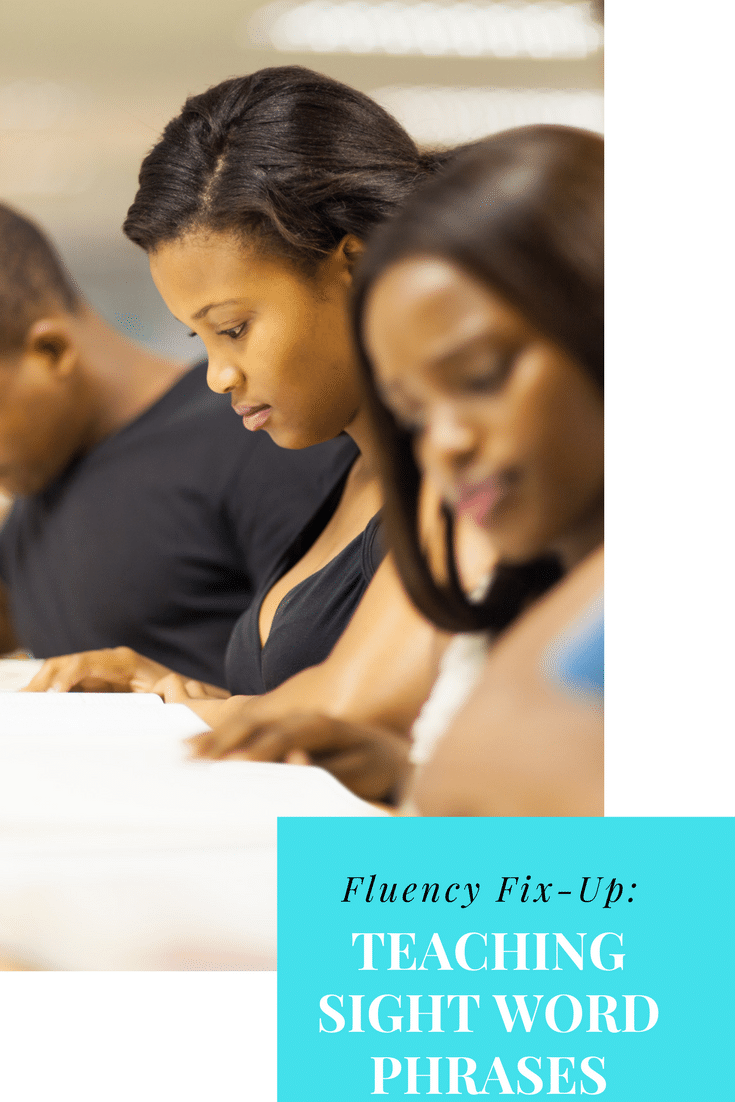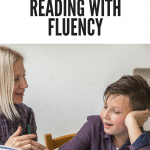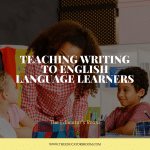As literacy teachers, we know the importance of teaching our students how to achieve appropriate fluency. Long before the Common Core, we were modeling, teaching fluency strategies, allowing students time to practice, and having fun with poems, Reader’s Theater, and choral readings. As students progress through the grades, the importance of fluency does not diminish, and in fact, explicit teaching for those who struggle with effective and appropriate reading speed, specifically, must be part of an intervention program. As I am reading and reflecting on Timothy Rasinski’s The Fluent Reader, it confirms my belief that fluency must be emphasized in the upper elementary grades as well as the primary grades, and that the most effective way to achieve this is through oral reading.
Of course, silent reading should take on a more prominent role as students move up the grades. However, oral reading should continue to play a prominent role as well, because it leads to better silent reading. Rasinski, P. 8
As a specialist, perhaps the most difficult foundational skill to remediate is that of fluency. Specifically, that of phrasing. Fluency is more complex than one may think.
[bctt tweet=” As a specialist, perhaps the most difficult foundational skill to remediate is that of fluency. ” username=”EducatorsRoom”]
It is more than reading smoothly and with expression. Fountas and Pinnell (2009) state that fluency is:
- Performing motor actions rapidly, easily, and without conscious attention…
- Using processing systems with automaticity
Now, they also mention other components, but these are the ones that I want to focus on since I have had several students struggle in this area.
The Common Core State Standards have the following expectations for grades one to five:
Foundational Skills
1.4 Read with sufficient accuracy and fluency to support comprehension.
a. Read on-level text with purpose and understanding
b. Read on-level text orally with accuracy, appropriate rate, and expression on successive readings
c. Use context to confirm or self-correct word recognition and understanding, rereading as necessary.
But it is also part of the grade four and five standards:
4.4, 5.4 Read with sufficient accuracy and fluency to support comprehension.
What is important here? That which as teachers we all know: the goal of appropriate fluency is to support and enhance comprehension. We all have students that seem to be the exception and who baffle us with a disjointed, choppy speed, who constantly repeat, self-correct, pause, struggle with decoding, lose their place, and yet despite it all, somehow are able to comprehend. However, I firmly believe that even if they are able to demonstrate an understanding of the text at present, their ineffective fluency will eventually catch up with them as the texts become increasingly more complex. At that point, it is almost certain that comprehension will suffer. And besides, even if the student can understand, most young readers will admit that the reading experience is not enjoyable as they are laboring so hard.
Teaching students sight words is an integral part of literacy instruction in kindergarten and first grade and with older students who are struggling readers. Most of our teaching involves instruction of individual words. We use word walls, flashcards, sight word worksheets, games, and working with words activities. However, using sight word phrases is useful for many reasons. Whether you use the Fry list or those from the Dolch list, the benefits of exposing students to phrases include:
· sight word recognition
· increased fluency
· uses words in context
· increased comprehension
To foster fluency, students need to know that reading involves reading a set of words, or phrases, and not isolated words. Many older readers who struggle are just not aware of this and phrasing is not innate to them. In turn, we know that if a child is reading fluently and has automaticity of sight words then their comprehension will usually increase. I always tell my students that they need to know their “lightning” (sight) words, lightning fast so they can save their smart brain power for the tricky words. Using the sight word phrases reinforces the idea that good readers read groups of words, phrases, and not word-by-word.
Research shows that helping students learn to read in phrases will improve their reading fluency and overall reading achievement. Rasinski, P. 94
Fluent readers chunk the text into appropriate phrases, not individual words. The students who struggle are the ones who read in a word-by-word manner and who cannot naturally divide a sentence into phrases. These students need instruction on how to find phrase patterns. One way to begin is to introduce students to sight word phrases. You can use the Dolch or the Fry list or even create your own. Use flash cards to do repeated readings of the phrases in isolation and then place the phrase back into a sentence. Finally, have the student reread an easy level or instructional level text (or a portion of it) to apply reading in phrases.
For example, take the sight word phrase above the clouds. The teacher would read the phrase to the student, pointing to each word. The child would track with their eyes and their pointer. Have the child repeat the phrase after you model. The child will practice reading the phrase until it is read as a phrase and at an appropriate speed. Then, take it to the sentence level: I saw a bird fly above the clouds. Have the child listen as you read the sentence and find the target phrase. From here, you can then instruct on the three phrases that make up the sentence:
-I saw
-a bird fly
-above the clouds
Using sight word phrases is a natural extension to sight word instruction for primary students. For older students, knowing phrase patterns will help them to read smoothly and with appropriate speed. For all students, comprehension will be greatly increased and the reading experience will be much more positive.
Next time, I will share a few more oral reading strategies that are easy and simple to implement, yet have a powerful impact on students’ fluency.
 [/fusion_builder_column][/fusion_builder_row][/fusion_builder_container]
[/fusion_builder_column][/fusion_builder_row][/fusion_builder_container]







Leave a comment